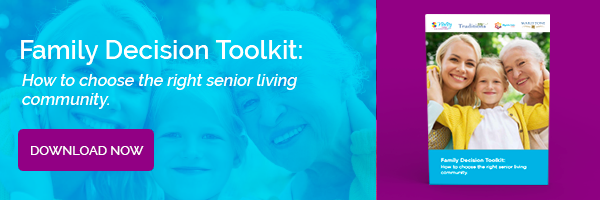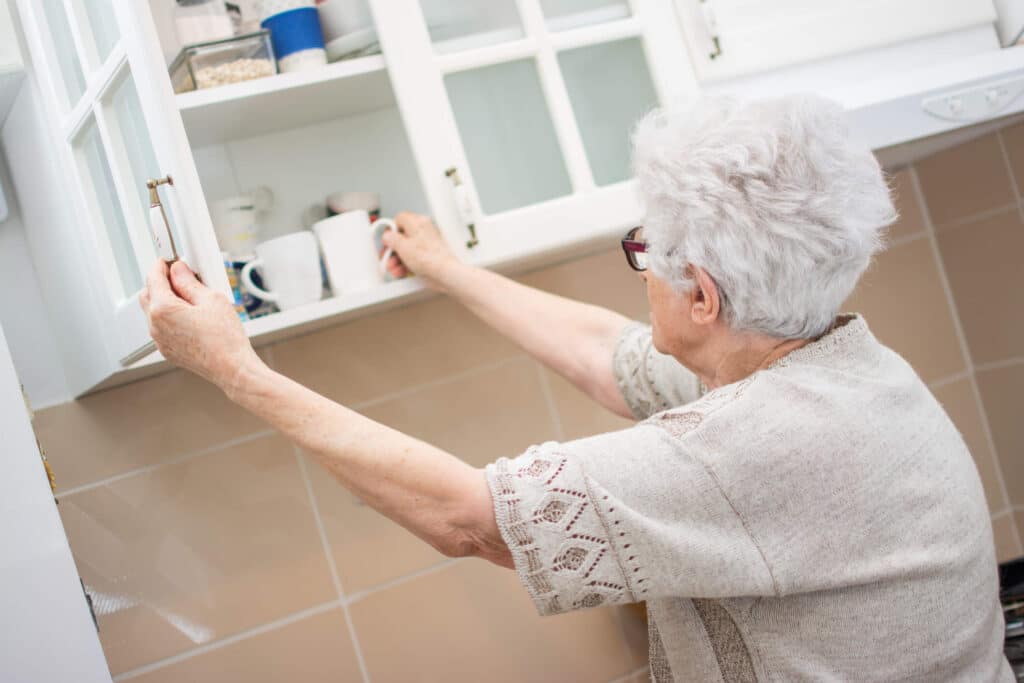When someone you love is unsafe (especially an older loved one), feeling afraid, stressed, helpless, and even a little guilty is normal. The home safety of an older loved one is crucial, and it takes everyone, including family, friends, neighbors, and professionals, to ensure their safety. Older adults who live alone are more at risk for falls, burglaries, fires, accidents, and wandering.
According to the Consumer Product Safety Commission, older adults are six times more likely to be treated at the emergency room due to a fall than younger people, and older adults are 3.5 times more likely to die in fires than the general population.
With nine out of 10 people wanting to age at home, family members must know how to prepare and modify their homes for safety.
How do you keep an older loved one who’s determined to live at home safe, then?
Here’s a home safety checklist to help.
General Home Safety
Keeping your loved one safe is your utmost priority, and with careful planning, you can ensure a secure and safe home with the following changes:
- Adding chair lifts to two-story homes
- Wider doors to accommodate wheelchairs and walkers
- Lever handles on doors and windows
- Install adequate lighting throughout the home, especially in hallways, stairways, and bathrooms
- Consider a ranch-style home
- Keep emergency contact information available throughout the home
- Install a security alarm and cameras
- Enlist a trusted neighbor to keep an eye out or check in on loved ones
Download this informative Family Decision Toolkit for additional guidance and information.
Kitchen Safety Checklist
Your loved one will spend time in the kitchen, and you want to ensure the kitchen is well-organized and safe for meal preparation and dining.
Implement the following kitchen updates to minimize accidents:
- Replace older small appliances with ones with automatic shut-off technology
- Relocate ovens to a more accessible location and height
- Add fire extinguishers in easy-to-reach locations
- Organize kitchen cabinets so that frequently used items are within reach
- Install ample lighting above the stove, sink, and countertops
- Have an electrician inspect wiring and outlets and repair or update anything that is not safe or up to code
Bathroom Safety Checklist
Without the following changes, the bathroom can be the source of severe injuries for older adults:
- Install non-slip pads, strips, and grab bars in showers and tubs
- Purchase raised toilet seats with non-slam lids
- Install a shower stool, chair, or bench
- Remodel showers to a walk-in design
- Upgrade bath and shower faucets with ones with anti-scald temperature valves
- Remove slippery rugs from bathroom floors
- Install an adjustable or hand-held showerhead
Technology Checklist
The following technical advancements are making it easier for older adults to retire safely in the comfort of their homes:
- Fall detectors: home sensors, wearable pendants, wristbands, and monitors can distinguish between falls and regular movement, in addition to alerting family and emergency personnel if a person falls
- Smart home technology: speakers or voice assistants that help homeowners adjust thermostats, play music, make calls, and turn off lights
- Automated medication dispensers: devices that use voice recognition, automatic alerts, and video calling capability to remind older adults when it’s time to take medication
Wrap-up and Next Steps
This checklist will help you make the changes that will ensure the comfort, safety, and security of your loved one.
You’ll both sleep a little better at night!
Download this informative Family Decision Toolkit for additional guidance and information, if you need additional assistance with exploring options regarding senior living, contact your nearest Vitality location.




